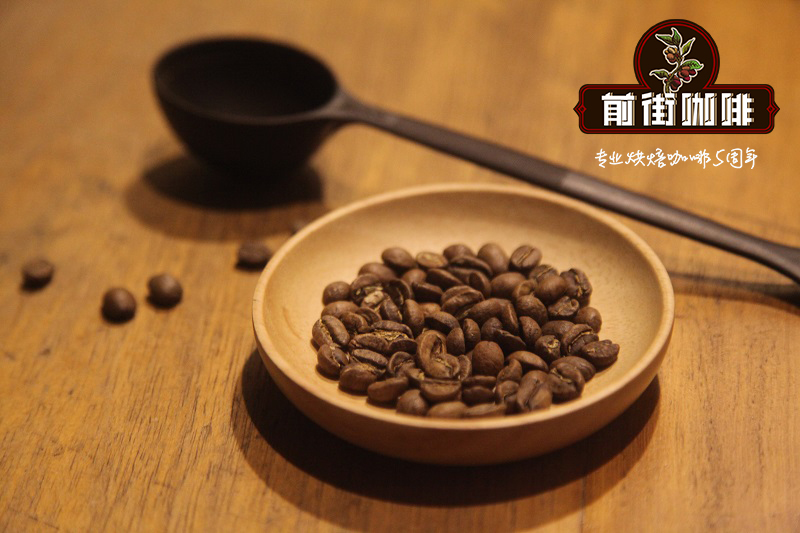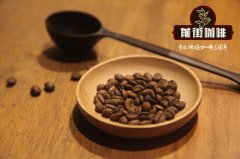Brief introduction of Ugandan Coffee varieties characteristics of Ugandan Sun Coffee Flavor on the North Slope of Elgon Mountain

Professional coffee knowledge exchange More coffee bean information Please pay attention to coffee workshop (Weixin Official Accounts cafe_style)
Front Street-Uganda Sun Coffee Introduction
Coffee is Uganda's largest crop, earning the most foreign currency, with 25% of the country's population engaged in the coffee industry, most of which is farm-grown (there are about 500,000 coffee farms throughout Uganda). In Uganda, the vast majority of coffee beans are Robusta and only 6 -15% Arabica.
Uganda's coffee is divided into two types: Robusta coffee and Arabica coffee. Robusta coffee is grown in the low altitude areas of central, eastern, western and southeast Uganda, with an altitude of up to 1200 meters. Arabica coffee is grown in the highlands of the slopes of Mount Elgon in the east and Mt. Rwenzori and Mt. Muhabura (elevation 1500-2300 m).
This sun-cured Ugandan is grown on the northern slopes of the Elgon Mountains by retail coffee farmers. The steep cliffs of Mount Elgon divide Kenya and Uganda almost evenly. The microclimate here provides excellent conditions for coffee growth and for the Sipi Falls coffee processing plant. Sipi Falls is a local central washing plant capable of processing freshly picked coffee berries and further drying them, providing additional convenience and conditions for local coffee farmers.
Coffee farmers in this area are mostly retail, with home-style coffee processing habits because they feel it saves them money. Kawacom, the exporter and owner of the Sipi Falls processing plant, has long tried to educate local farmers about how coffee processing plants can help them improve the quality of coffee processing and save time, which in turn can lead to higher incomes, encouraging local farmers to send their harvested coffee to the central processing plant for more professional washing, fermentation and drying. They have also set up experimental breeding centres to develop higher-quality coffee varieties and provide agricultural support and assistance to local farmers, many of whom are mainly women.
This microbatch is one of the few coffee processed in the sun at the plant. After the coffee is picked, it is directly dried in the sun. Because the pulp is retained, the aroma of coffee fruit is retained to the maximum extent. Prior to solarization, immature coffee cherries were screened only by fluting in a sink. The coffee is then placed on a drying rack for sun treatment. The drying rack allows air to circulate effectively, and the worker needs to turn the coffee fruit repeatedly to ensure that all coffee fruits are evenly dried.
Uganda sun
Grower: slpl falls processing plant kannong
Production area: Kapchorwa region
Breed: SL14 L28
Altitude: 1300-2000
Treatment: Solarization
Flavor: Strawberry milkshake peach cream prune
In brief: Qianjie is a coffee research center, happy to share knowledge about coffee with everyone, we share it without reservation only to let more friends fall in love with coffee, and there will be 3 low discount coffee activities every month, because Qianjie wants to let more friends drink the best coffee at the lowest price, which is also the purpose of Qianjie for 6 years!
END
Important Notice :
前街咖啡 FrontStreet Coffee has moved to new addredd:
FrontStreet Coffee Address: 315,Donghua East Road,GuangZhou
Tel:020 38364473
- Prev

Do Ugandan coffee beans taste good? the flavor of Ugandan Mangdie Coffee is rich with tropical fruit.
Professional coffee knowledge exchange more coffee bean information please follow the coffee workshop (Wechat official account cafe_style) front street-Uganda Mangdie Sun introduction Uganda is located in the source of the Nile, this is a landlocked country not near the sea in Africa, although the same as other East African countries have a long history of producing coffee, but due to the war caused by ethnic antagonism, the quality of coffee has always been unable to mention.
- Next

What kind of coffee does Tanzanian coffee belong to? Tanzanian coffee has a pure, sour and soft flavor.
Professional coffee knowledge exchange more coffee bean information please follow the coffee workshop (Wechat official account cafe_style) front street-Tanzania coffee characteristics of nearly 95% coffee from small-scale farmers and grow different varieties there are about 400000 farmers in Tanzania, with an average small-scale area of 1 to 2 hectares per household, support 95% of the total coffee production in Tanzania, as for the remaining 5%
Related
- Beginners will see the "Coffee pull flower" guide!
- What is the difference between ice blog purified milk and ordinary milk coffee?
- Why is the Philippines the largest producer of crops in Liberia?
- For coffee extraction, should the fine powder be retained?
- How does extracted espresso fill pressed powder? How much strength does it take to press the powder?
- How to make jasmine cold extract coffee? Is the jasmine + latte good?
- Will this little toy really make the coffee taste better? How does Lily Drip affect coffee extraction?
- Will the action of slapping the filter cup also affect coffee extraction?
- What's the difference between powder-to-water ratio and powder-to-liquid ratio?
- What is the Ethiopian local species? What does it have to do with Heirloom native species?

